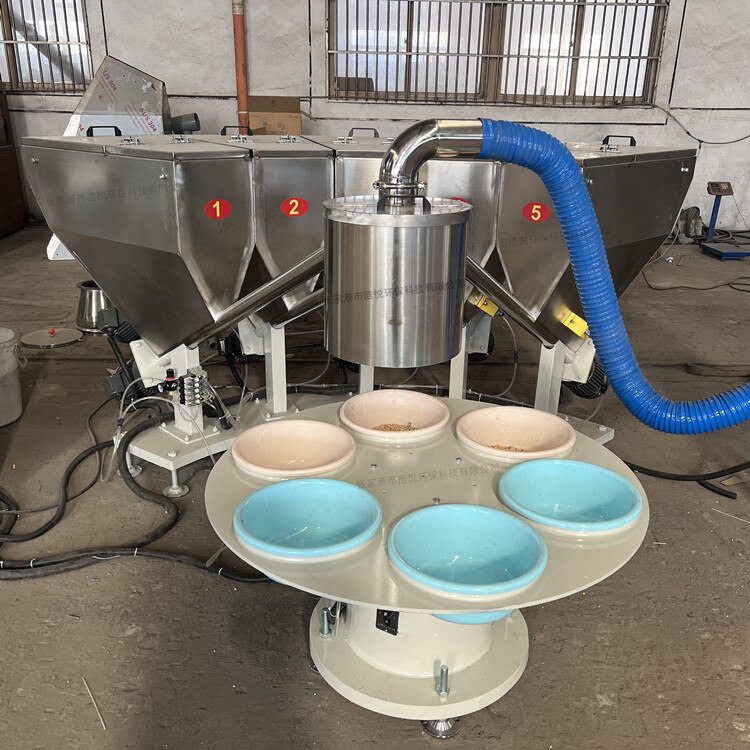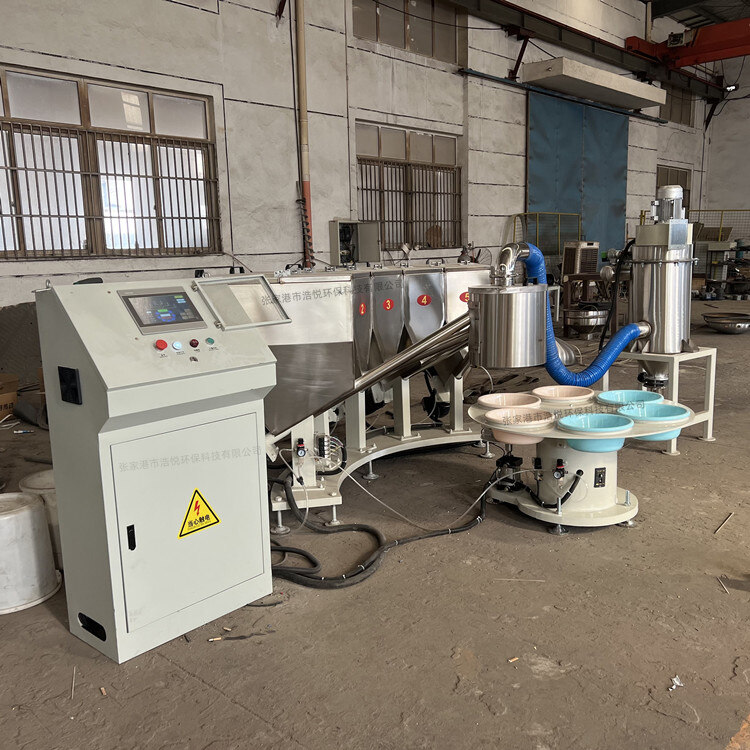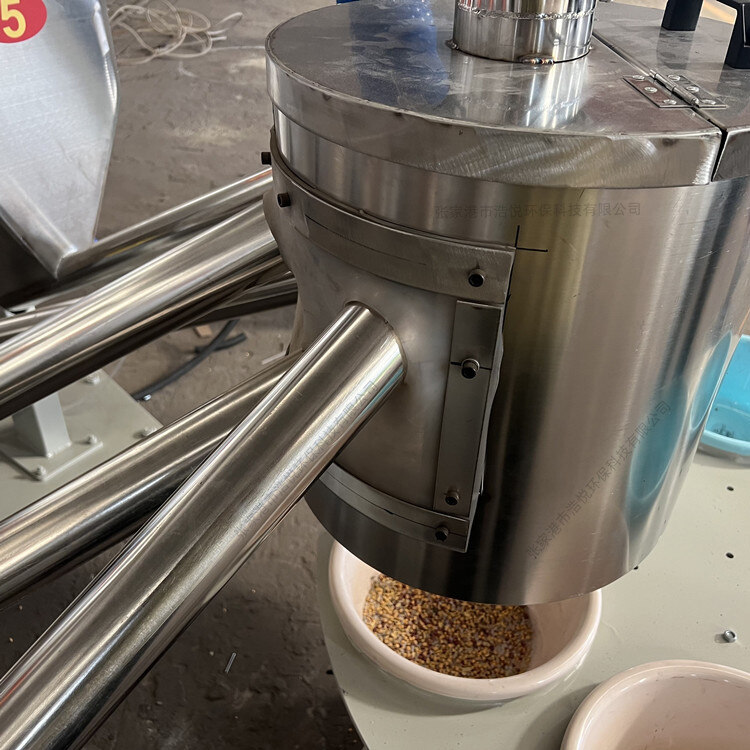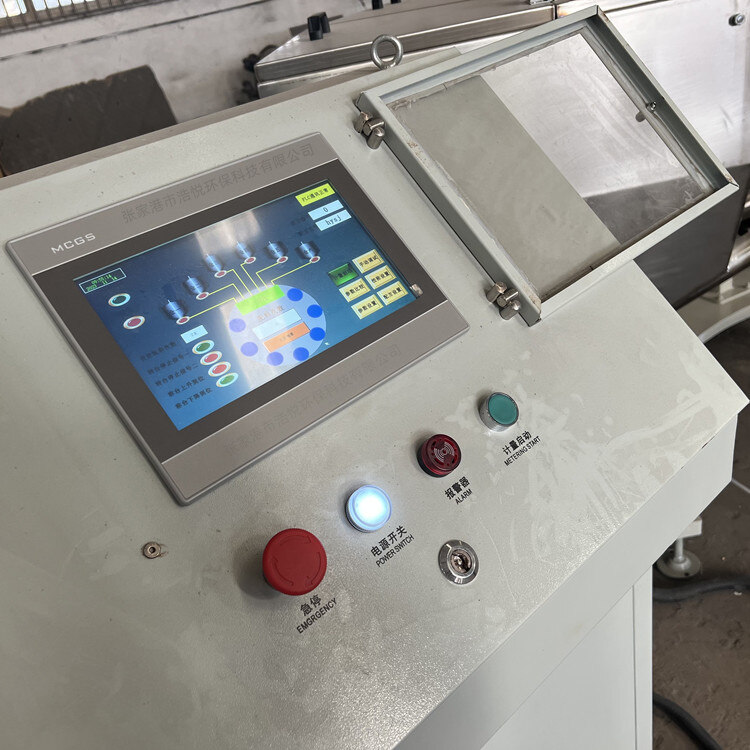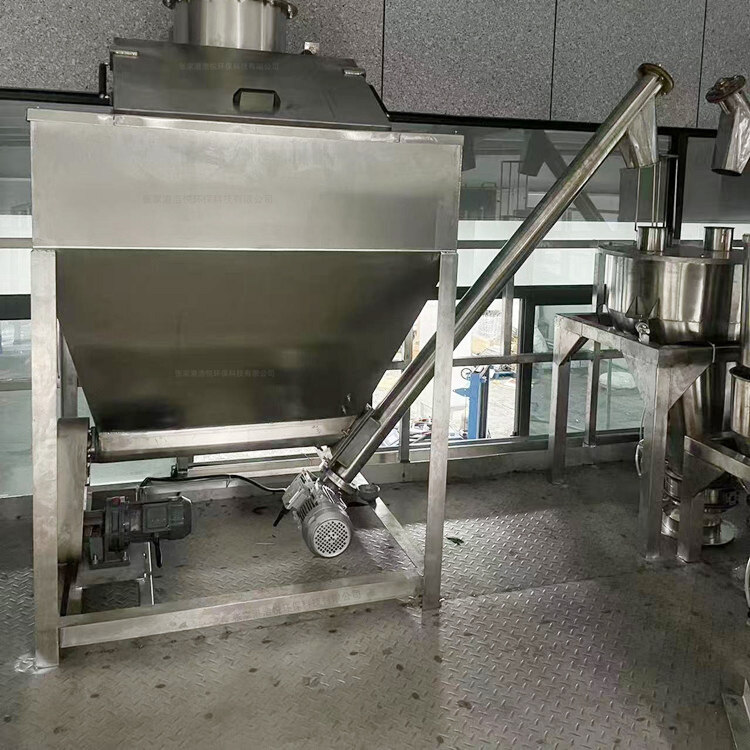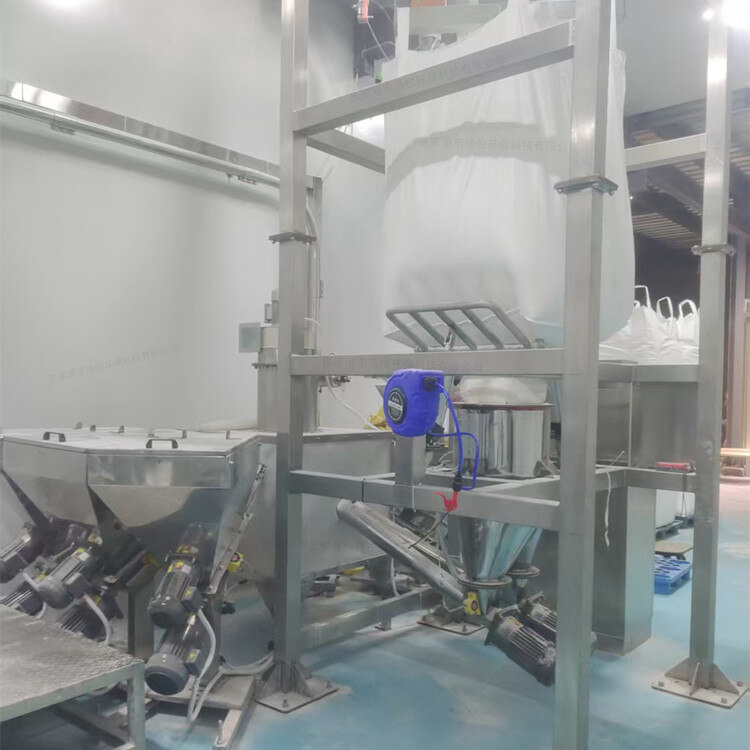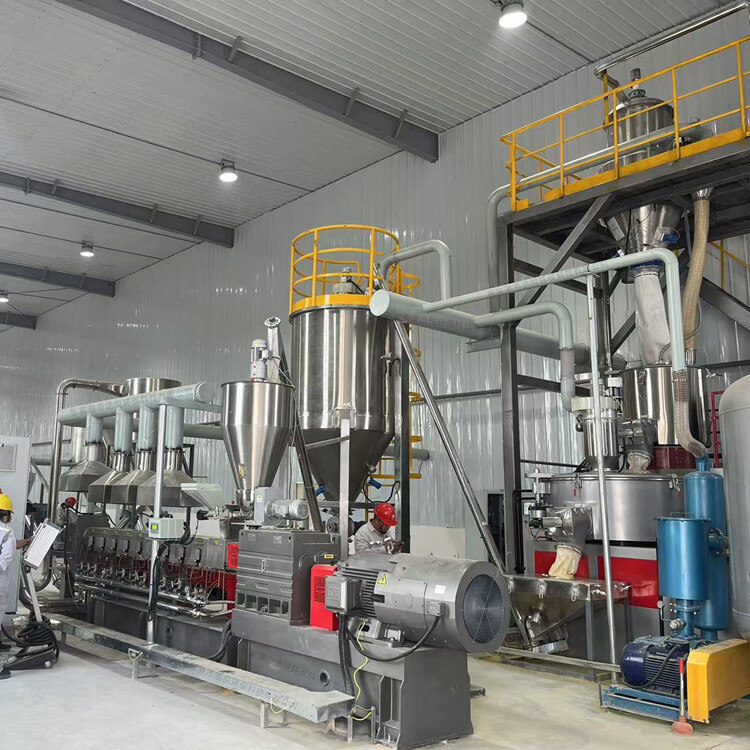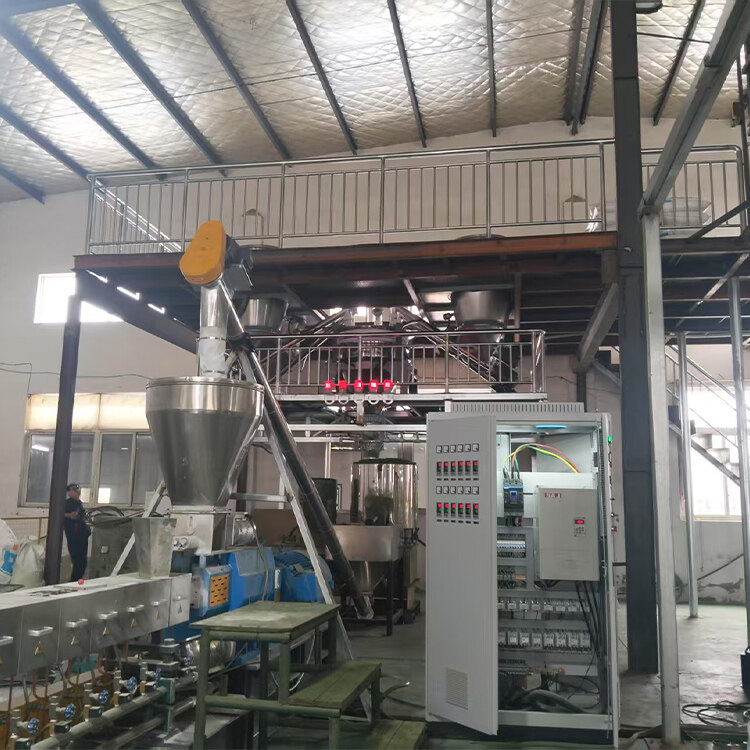- Introduction to automatic batching machine and fully automatic batching machine equipment
- The powder metering system tells you about the introduction of the mixing and drying machine
- 1000kg vacuum feeding machine
- Fully automatic small material batching system
- Research on Innovation of Automatic Weighing Machine Technology
- Design and operation of automatic batching system using PLC, industrial computer and frequency converter
Rubber powder batching machine, small material weighing batching machine, high-precision batching machine
- Category:Batching Plant
- Hits:201次
- Release Date:2025-06-27
- Share:
- Inquiry
- Details
Against the backdrop of increasingly stringent product quality requirements in modern industrial production, high-precision batching machines, as the core equipment for achieving precise material proportioning, have become a key technical support for industries such as chemical, pharmaceutical, food, and new energy. This type of equipment integrates advanced sensor technology, intelligent control algorithms, and precision actuators to control material proportioning errors within an extremely low range. This not only ensures the stability of product quality, but also promotes the transformation of production modes towards intelligence and digitization.
1、 Technical definition and core principles of high-precision batching machine
High precision batching machine refers to intelligent equipment that can accurately measure multiple materials, automatically mix according to preset formulas, and achieve full process automation control. The core technical indicator lies in measurement accuracy - equipment with dynamic batching error ≤ ± 0.5% and static batching error ≤ ± 0.1% are usually defined as high-precision. Compared with traditional batching equipment, its technological advantages are reflected in three dimensions: improved sensor accuracy (such as using 0.01% FS level weighing sensors), optimized control algorithms (introducing adaptive PID regulation and machine learning prediction models), and precision of actuators (micro feeding devices driven by servo motors).
The working principle is based on the closed-loop control logic of "perception computation execution":
Physical quantity conversion: converting parameters such as weight and volume of materials into electrical signals through weighing sensors, flow sensors, etc;
Signal processing: After amplification, filtering, and A/D conversion, it is transmitted to the control system;
Intelligent computing: PLC or industrial computer calculates deviation values based on preset formulas and real-time data;
Execution adjustment: Drive the feeding mechanism (such as servo screw, micro valve) to dynamically adjust the feeding amount until the target value is reached.
For example, in the case of lithium battery positive electrode material batching, a high-precision batching machine needs to accurately mix materials such as lithium iron phosphate, carbon black, and binder in a ratio of 9:0.5:0.5. Traditional equipment with an error of ± 2% can cause fluctuations in battery capacity, while high-precision equipment with an error control of ± 0.3% can improve battery consistency by more than 40%.
2、 System Architecture and Core Component Analysis
(1) Precision measuring unit
Weighing measurement module
Sensor: Adopting electromagnetic force compensation weighing sensor (accuracy 0.01% FS) or high-precision resistance strain sensor (resolution 1/50000), combined with a fully suspended weighing platform to reduce lateral force interference.
Feeding mechanism: dual stage feeding design for main and auxiliary feeding - the main feeding adopts a large-diameter screw to quickly fill to 90% -95% of the target value, and the auxiliary feeding is finely adjusted at a speed of 0.1g/s by a servo motor driven micro screw, achieving a graded control of "coarse mixing+fine mixing".
Flow metering module
For liquid or gas materials, Coriolis mass flow meters (accuracy ± 0.1%) or thermal gas mass flow meters are used to directly measure mass flow rate rather than volume flow rate, eliminating the influence of temperature and pressure fluctuations.
(2) Intelligent control system
Hardware core: adopt multi-core PLC (such as Siemens S7-1500) or industrial edge computing gateway, with operation cycle ≤ 1ms, and support real-time data acquisition of more than 200 sensors.
Software algorithm:
Dynamic compensation algorithm: By establishing a mathematical model of material flow characteristics (such as considering material resting angle and adhesion), the deviation of feeding amount can be corrected in advance;
Fault prediction algorithm: Using vibration sensors and motor current monitoring data, it predicts faults such as material blockage and jamming, with an accuracy rate of over 95%.
Human computer interaction: A color touch screen of 15 inches or more, supporting 3D visualization configuration, capable of storing over 1000 sets of formulas, and enabling one click switching of production tasks.
(3) Execution and conveying unit
Servo drive system: The feeding screw, valve and other actuators are driven by servo motors (positioning accuracy ± 0.01mm), combined with high-precision reducers (transmission error ≤ 1 arc minute), to ensure precise control of the feeding amount.
Fully enclosed transportation: using food grade stainless steel pipes (inner wall roughness Ra ≤ 0.8 μ m) and pneumatic butterfly valves, combined with vacuum feeding or inert gas protection, to prevent material oxidation or contamination, especially suitable for the pharmaceutical and food industries.
(4) Auxiliary function module
Automatic calibration system: equipped with standard weights or volume calibration devices, it can automatically calibrate the measurement accuracy according to the set cycle, reducing manual intervention errors.
Dust control: Integrated pulse back blowing dust removal system (filtration accuracy of 0.3 μ m) ensures that the dust concentration in the batching environment is less than 10mg/m ³, in compliance with environmental and safety standards.
3、 Industry application scenarios and technical solutions
(1) Pharmaceutical industry: API raw material precise ingredients
Application requirement: The production of a certain anti-tumor drug requires mixing the active ingredient with excipients in a ratio of 1:999. A traditional equipment error of ± 1% can cause fluctuations in the content of the active ingredient beyond the pharmacopoeia standard.
Solution: Adopt a three-level weighing and batching system——
Main scale: 10kg range (accuracy ± 0.1g) used for auxiliary material measurement;
Micro scale: 100g range (accuracy ± 0.01g) used for precise weighing of API;
The mixing process uses a vacuum 3D mixer to ensure a mixing uniformity of>99.5%.
Technical achievements: The ingredient error is controlled within ± 0.05%, and the product qualification rate has been increased from 85% to 99.8%, meeting FDA's cGMP requirements.
(2) New energy industry: Ingredients for positive and negative electrode materials of lithium batteries
Material characteristics: The atomic ratio error of Li: Ni: Co: Mn in ternary materials (NCM) must be controlled to be ≤ ± 0.3%, otherwise it will affect the battery voltage platform and cycle life.
Equipment configuration:
Weight loss measuring scale (range 500kg, accuracy ± 0.2kg);
Inert gas protection system (oxygen content<10ppm);
Temperature compensation algorithm (real-time correction of material density changes with temperature).
Production data: After the introduction of a certain power lithium battery enterprise, the standard deviation of battery capacity consistency decreased from 50mAh to 15mAh, and the uniformity of electrode thickness increased by 30%.
(3) Food industry: precise addition of nutritional fortifiers
Application scenario: In the production of infant formula milk powder, the amount of trace components such as vitamins and minerals added is usually between 0.01% and 1%.
Technical highlights:
Adopting a micro screw feeder (minimum feeding amount of 0.1g);
Real time monitoring of cutting status by visual inspection system;
The data traceability system records the timestamp and parameters of each batch of ingredients, meeting the traceability requirements of ISO22000.
(4) Fine Chemicals: Control of Catalyst Proportions
Process requirements: The proportion of main catalyst to co catalyst for a certain polymer material catalyst should be controlled at 1:5000, and the mixing time should be less than 30 seconds.
Equipment innovation:
Adopting a twin-screw weight loss scale for synchronous measurement;
The dynamic mixer is equipped with a built-in turbulence element to achieve instantaneous uniform mixing;
The pressure sensor monitors the mixing chamber pressure in real-time to prevent catalyst deactivation.
4、 Technological development trends and innovation directions
Deep integration of AI:
Introducing deep learning algorithms to train models using historical production data, achieving autonomous optimization of ingredient parameters (such as automatically adjusting feeding speed based on material batch differences);
Machine vision technology is used for real-time detection of material particle size changes and dynamic correction of measurement parameters.
Digital twin applications:
Build a virtual ingredient system to simulate material flow and mixing processes in three-dimensional space, verify the feasibility of the formula in advance, and shorten the debugging time of the new formula from 72 hours to 8 hours.
Green and energy-saving design:
The energy consumption of servo motors is reduced by 30% compared to traditional asynchronous motors;
The energy recovery system utilizes the falling potential energy of materials to generate electricity for auxiliary functions of the equipment.
Modular and flexible production:
Adopting a quick release structure design, the cleaning time is reduced from 4 hours to 1 hour when changing material varieties, adapting to the needs of multi variety and small batch production.
As a key part of industrial automation, high-precision batching machines have directly promoted the improvement of product quality and the innovation of production modes due to their technological progress. In the future, with continuous breakthroughs in sensor technology, intelligent algorithms, and manufacturing processes, such devices will play an irreplaceable role in more high-end manufacturing fields and become one of the core advantages for enterprises to achieve differentiated competition. In practical applications, it is recommended to choose an appropriate equipment solution based on material characteristics, precision requirements, and production scale, and pay attention to deep integration with the factory's digital system to maximize the potential of the equipment.


